...
The following flags are used by Earthdata Search to trigger badges to display:
| Badge | Type | Flag | Description |
|---|
 Image Modified Image Modified
| Spatial | | Will be true if spatial subset types are associated with the collection. |
 Image Modified Image Modified
| Temporal | has_temporal_subsetting | Will be true if temporal subset types are associated with the collection. |
 Image Modified Image Modified
| Variable | | Will be true if there are variables associated with the collection. Will also be true if there are multiple UMM-V records associated with the collection without a UMM-S record. |
 Image Modified Image Modified
| Format | has_formats | Will be true if any of the collection's associated services has more than one "SupportedFormats" value. The collection's "has_formats" flag is false when none of its associated services has more than one "SupportedFormats" value. |
 Image Modified Image Modified
| Transform | has_transforms | Will be true if any of the collection's associated services has a defined “SubsetType” or “InterpolationType”, or multiple “SupportedProjections” values are defined within any of its associated services. A collection’s “has_transforms” flag will only be false if none of its associated services has a defined “SubsetType” or “InterpolationType”, and none of its associated services has more than one “SupportedProjections” value. |
| UI Text Box |
|---|
|
| If some of the collections that your DAAC provides do not offer the same capabilities as other collections, you will need a separate UMM-S record that describes the services offered by those collections. For example, If you have 10 collections that offer spatial subsetting, variable subsetting, and reformatting, and 5 collections that offer only spatial subsetting and reformatting, then you will need 2 UMM-S records. One record would be associated with the first 10 and the other with the second set of 5. |
| UI Steps |
|---|
|
| UI Step |
|---|
Using MMT, create a UMM-S record to describe the service capabilities of your collection. For detailed instructions on that process, please refer to the MMT User Guide. |
| UI Step |
|---|
When creating the UMM-S record, on the "Service Information" page the type must be either ESI or OPeNDAP for a customizable badge to appear. |
| UI Step |
|---|
When creating the UMM-S record, pay special attention to the "Options" page. On that page there are 2 fields that will trigger icons for EDSC to display: "Subset Types" and "Supported Output Formats". | UI Expand |
|---|
| title | Spatial, Temporal, or Variable |
|---|
| If the Spatial, Temporal, or Variable subset types are selected, the respective badge(s) will be displayed for the associated collection(s) in Earthdata Search. 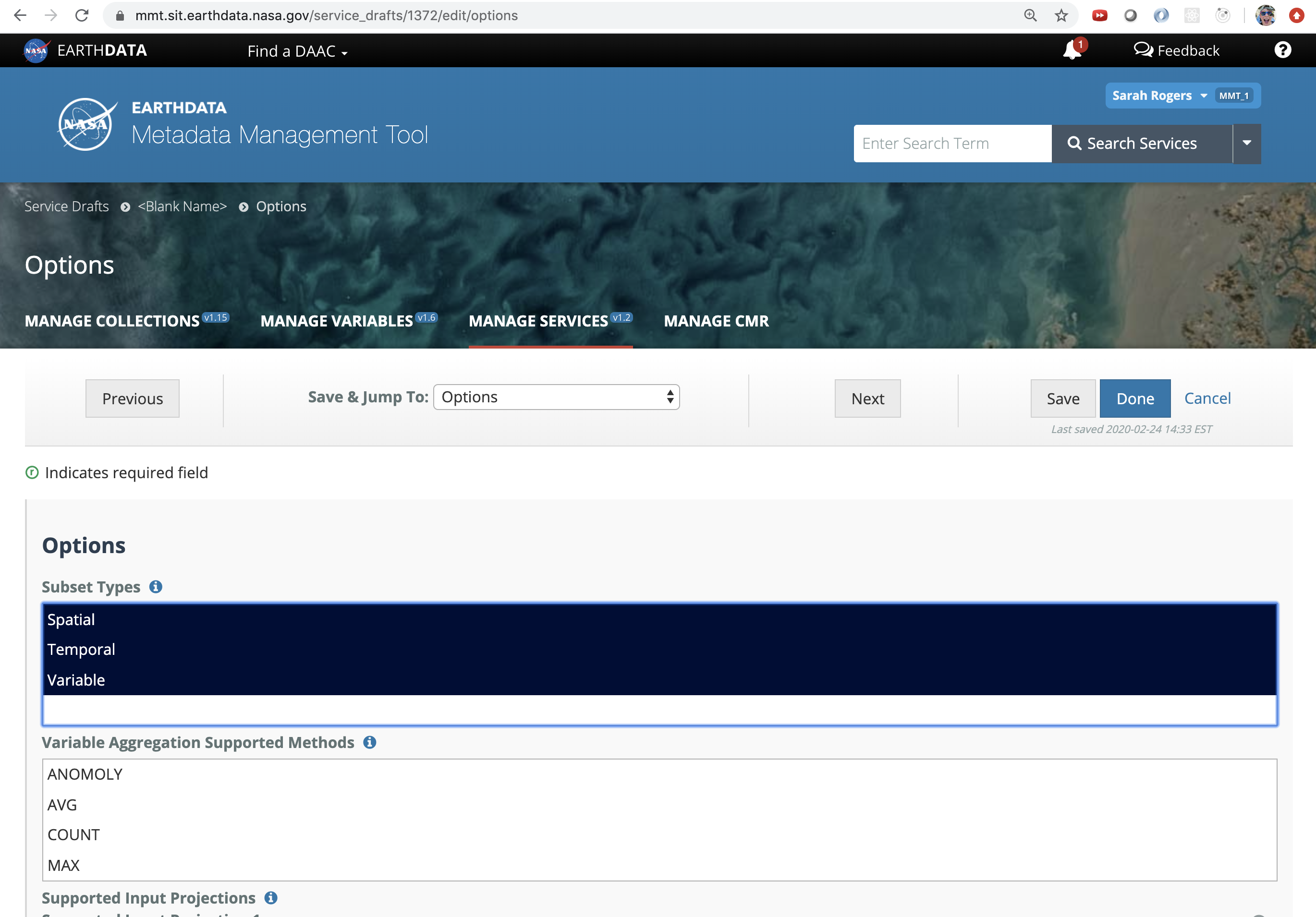
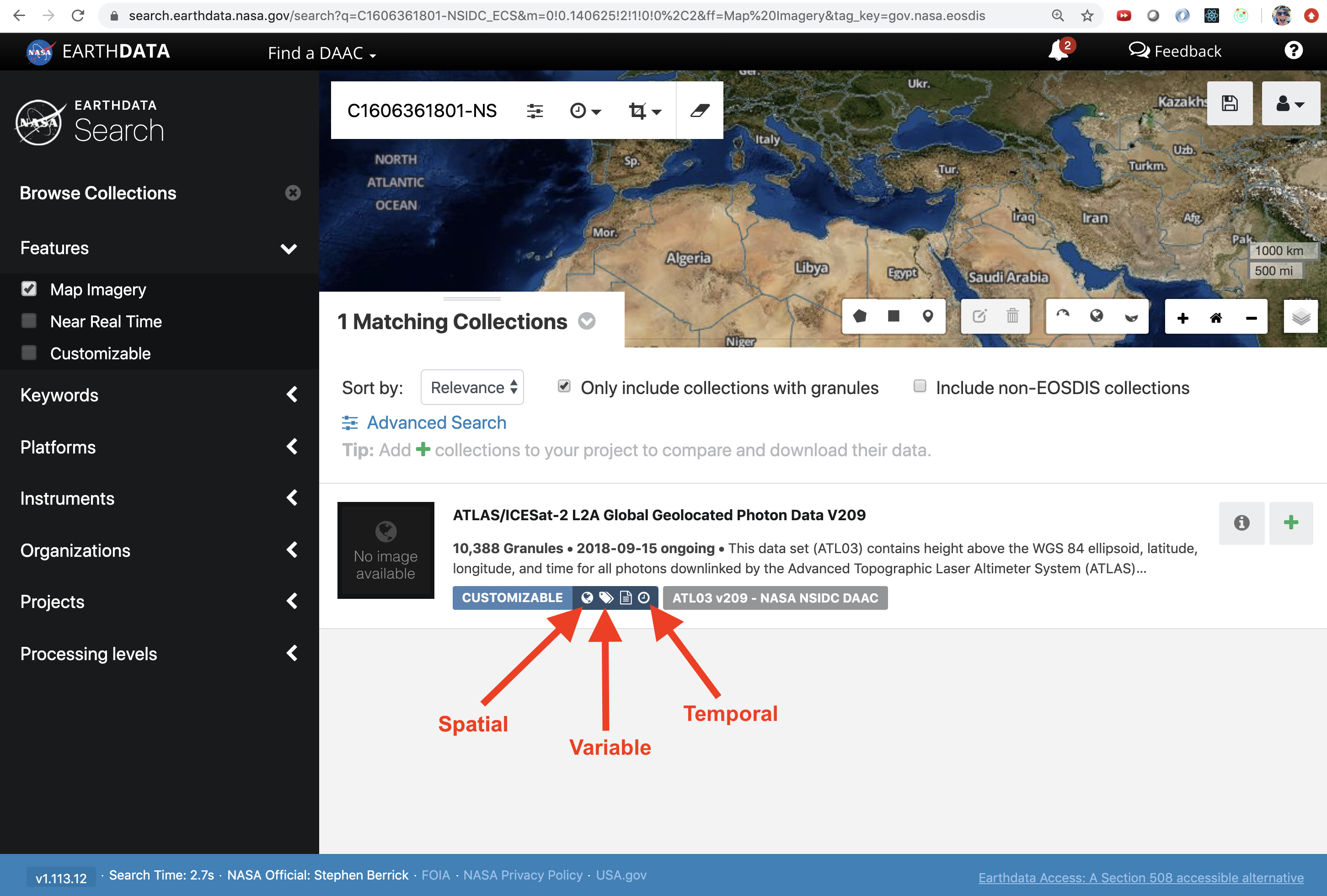 |
| UI Expand |
|---|
| If a collection has multiple supported outputs selected, the format badge will be displayed for the associated collection(s) in Earthdata Search. 
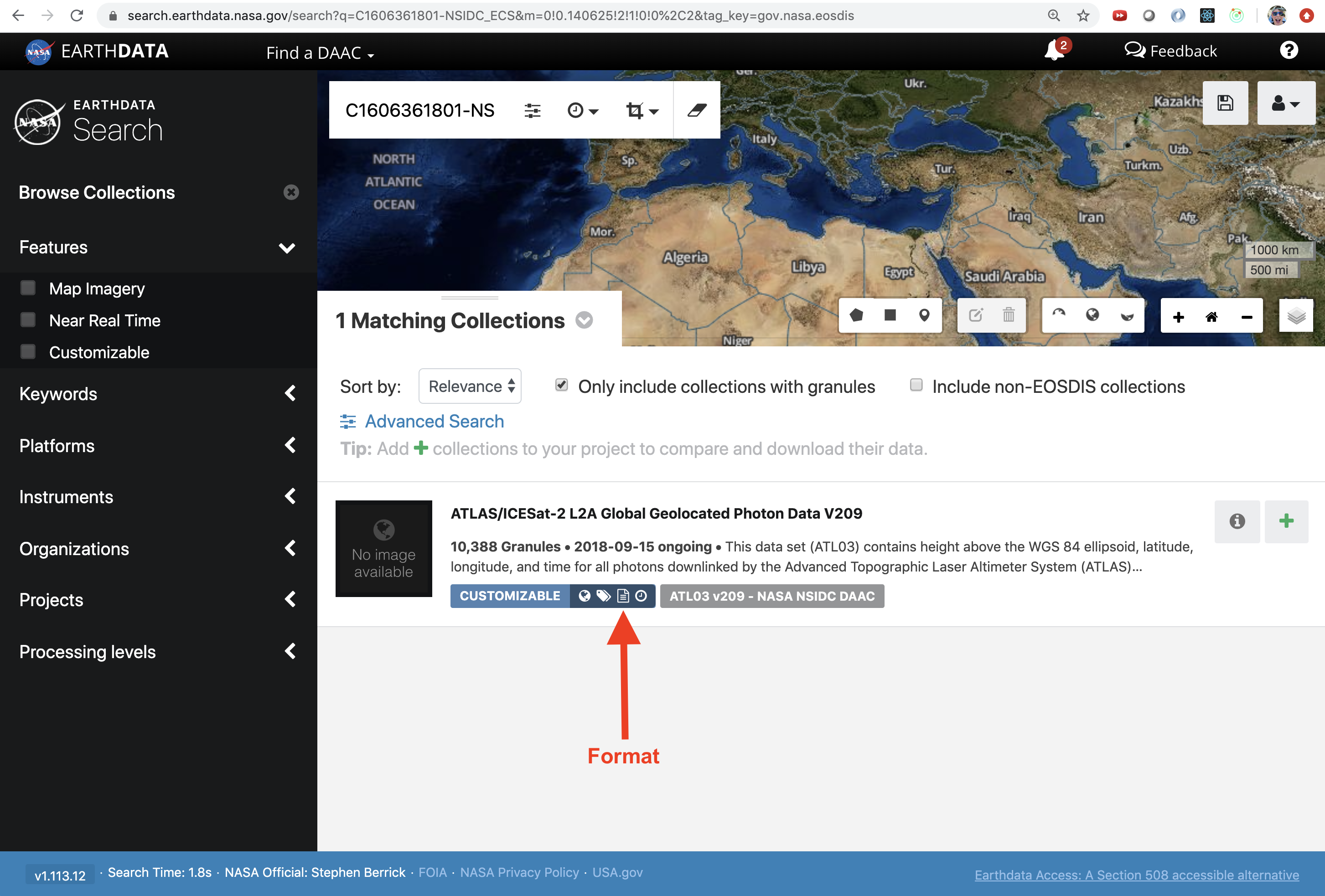
|
| UI Expand |
|---|
| If multiple projections or multiple interpolation types are selected/entered, the transform badge will be displayed for the associated collection(s) in Earthdata Search. 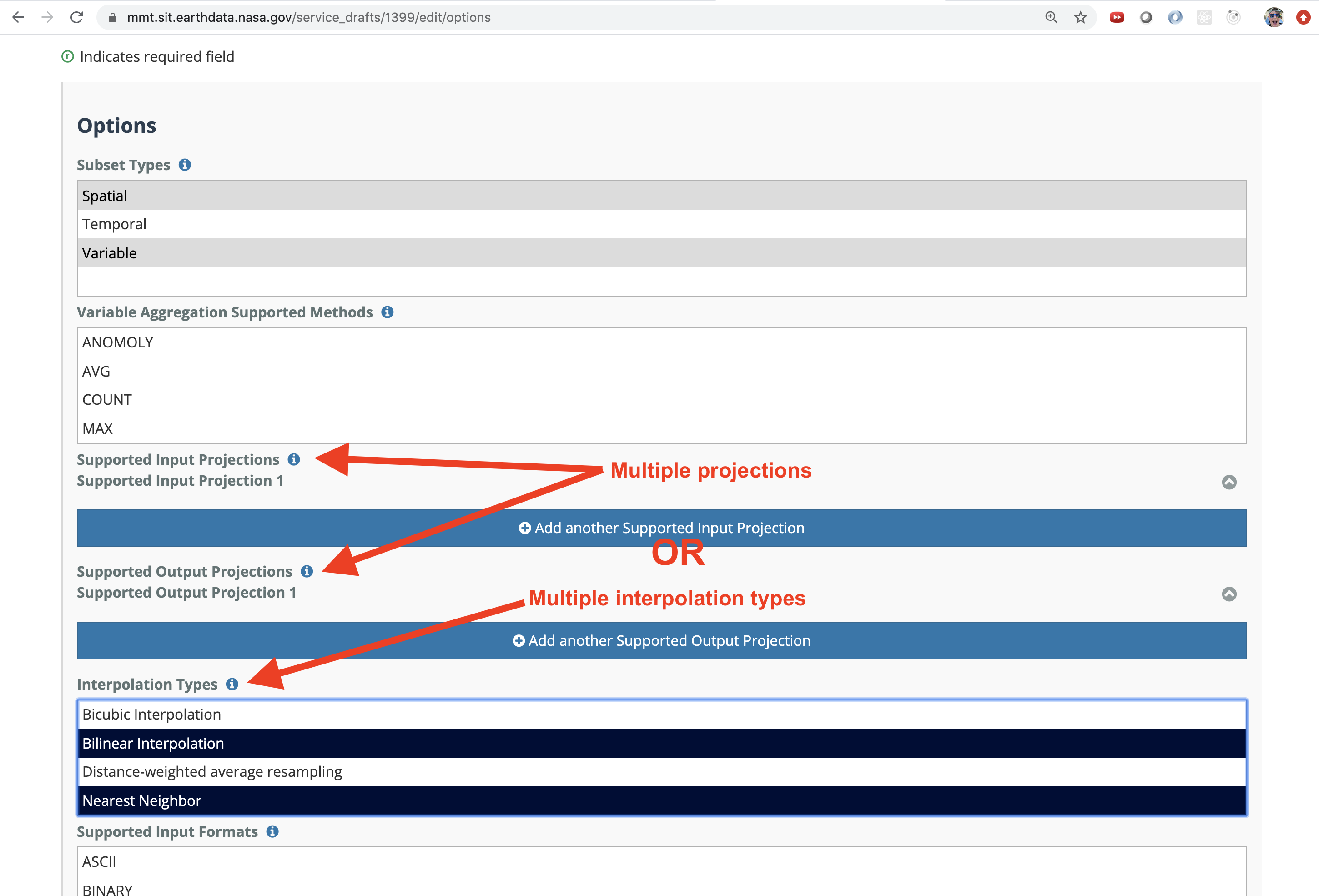
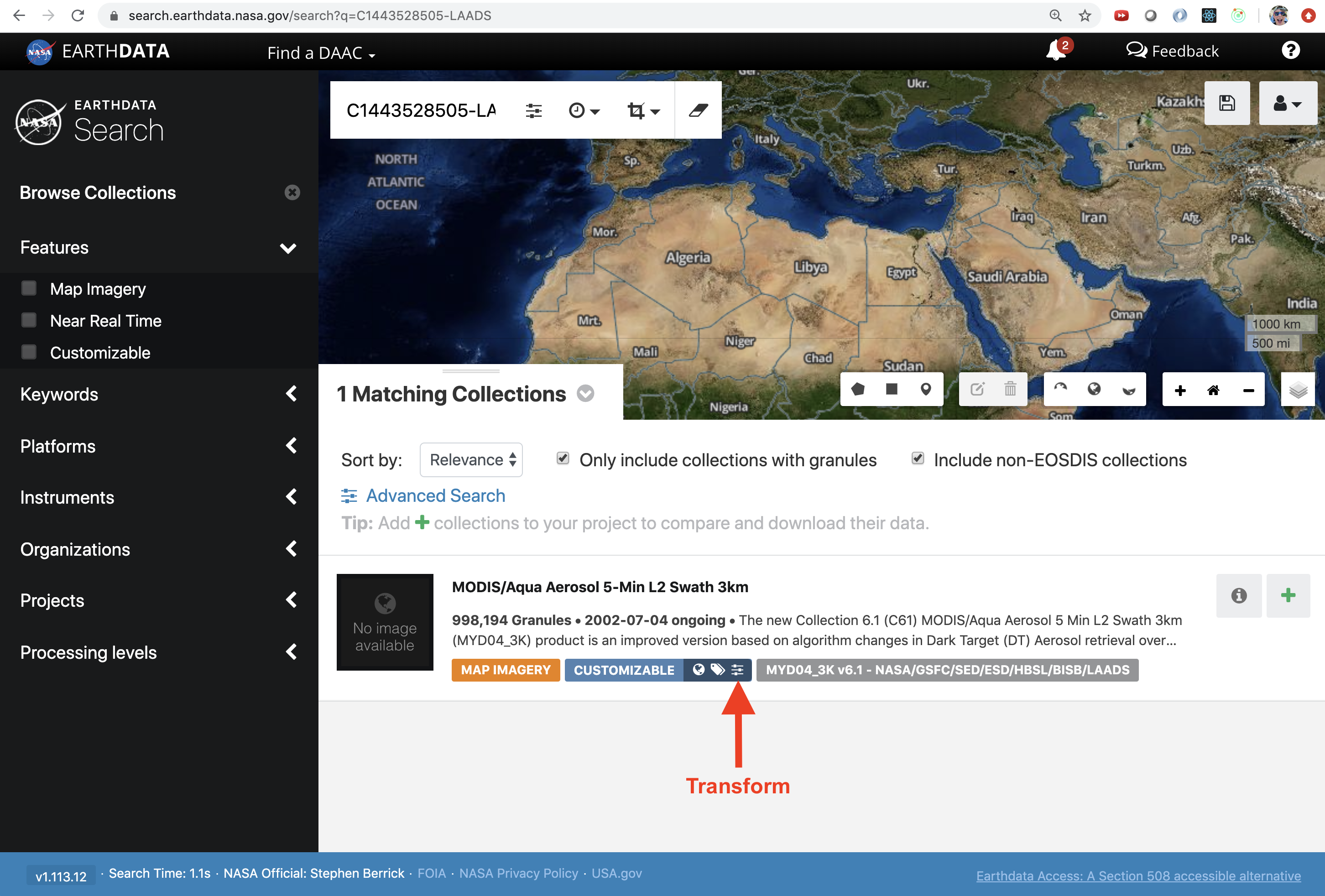
|
|
| UI Step |
|---|
Once you are finished creating or updating your UMM-S record and have published those changes, the icons should be reflected appropriately in Earthdata Search. |
|
...










